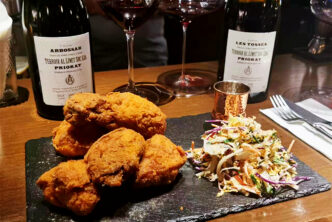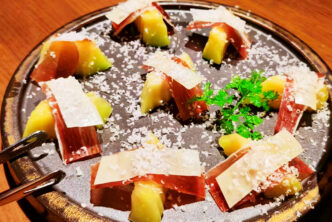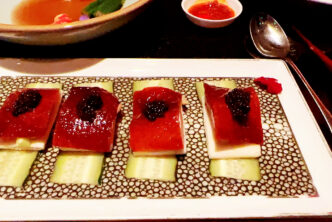TAVERNA DEL GRAPPOLO BLU
Scale di Via Moglio, 1
53024 Montalcino SI, Italia
Tel: +39 0577 847150
The dishes
Slightly smoked salt-cured Chianina beef / Bresaola di Chianina leggermente affumicata
Pici with garlic tomato sauce / Pici all’aglione
Oven-roasted pork hock (knuckle) / Stinco di maiale al forno
Rabbit in Brunello sauce / Coniglio al Brunello
Lemon sorbet / Sorbetto al limone
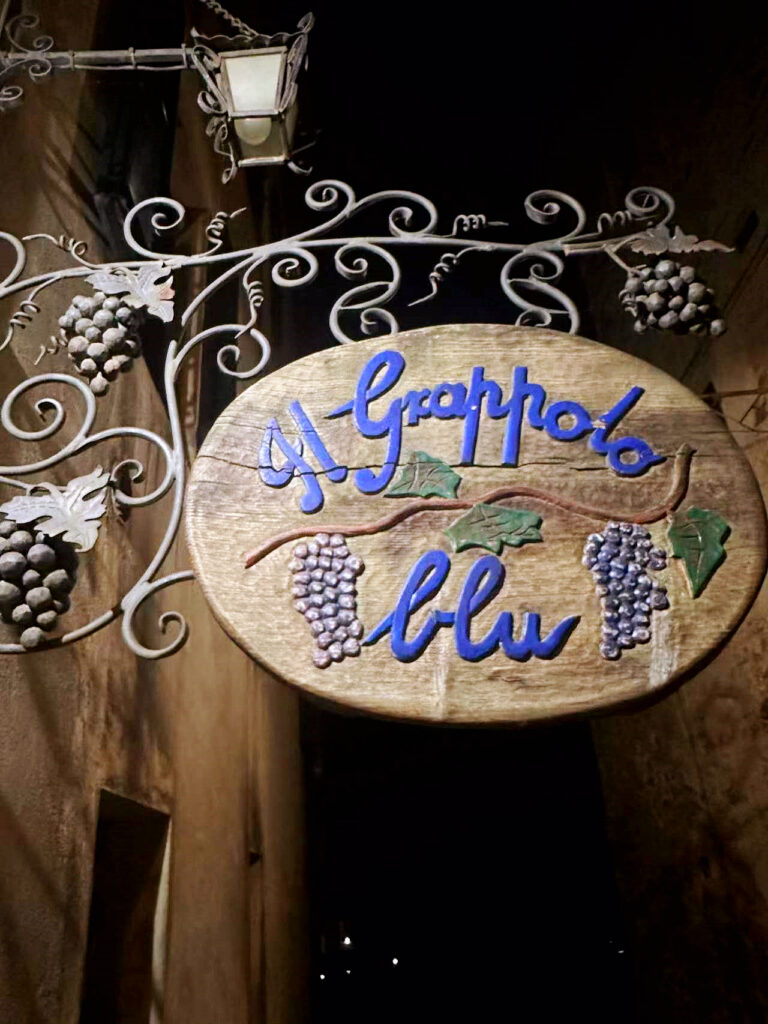
The Taverna del Grappolo Blu has only recently shot to fame in Montalcino, but it deserves its moment in the sun. Actually opened back in 2004 by owner Luciano Moretti who moved to town of the hill of the holm oak (Montalcino or mons ilcinus, in Latin), it is a very typical local trattoria serving just as local food enlivened by a very good wine list with a smattering of older vintages. No fancy linen or designer cutlery await, but the interior is pleasantly rustic and very true-to-type of this neck of the Tuscan woods. A few more windows would help one avoid a sense of stuffiness that tends to develop as the evening wears on, but for the most part a stop at the Taverna is one you won’t regret. And it must be so, given that sybarites have benne well-known to think nothing of making even a two hour drive just to come by the place and eat luch or dinner there.
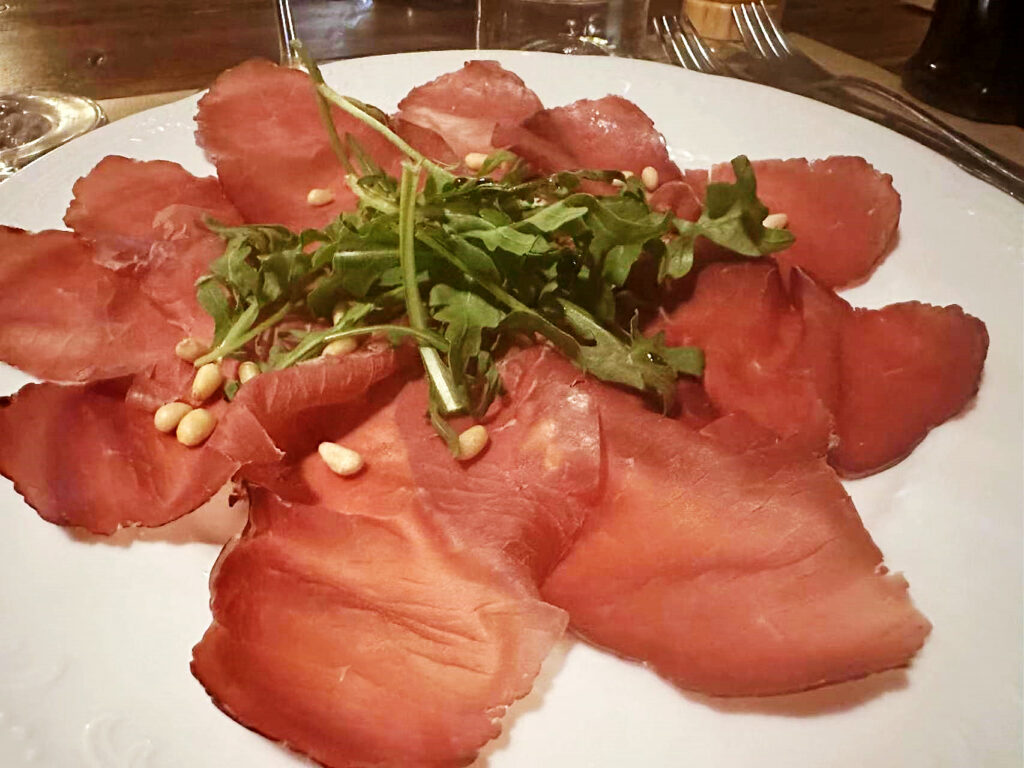
The cold cuts are especially good, clearly sourced with an attention to quality. The bresaola affumicata (smoked cured beef) is downright delicious, only very lightly smoky and served on a bed of fresh salad. Tellingly, in an authentic place such as this one the thing does not come drenched in improbable balsamic vinegar, a sure-fire sign you ended up in a place that caters mostly to, and makes its living from, tourists. Here the meat is flavourful, crisp, lively and the delicate olive oil dressing perked up only by a little rock salt and the lemon drops that we squeezed on to both meat and salad. You’d have to be extremely unlucky or talented to end up in place that can’t make a good dish of pici all’aglione, a very typical pasta dish of coastal and central Tuscany that is hard for anyone to get wrong in the region. And they do a good job of it at the Taverna, with plenty of garlicky power to go along with the flavourful tomato sauce. Pici are an irregular thick spaghetti-like pasta shape that traces its origins most likely back to at least the fifth century BCE (Before Common Era, or Before Christ); at least this much we can surmise given that an image of what look very much like pici is found in the marvelously beautiful Tomba dei Leopardi in a Etruscan necropolis famous the world over. They are one of my favourite pasta shapes and one I have studied at length over the years. Perhaps original of the Valdichiana (that area next to the Tuscan-Umbrian border), pici, though commonly referred to as a “Tuscan pasta”, in fact are typical of only a small section of that region and are in fact common to parts of both Umbria and northern Lazio (all areas where the Etruscan people had set up shop). These include the Val d’Orcia, val di Chiana, del Monte Amiata, the province of Arezzo and the province of Viterbo in northern Lazio. In fact, the name changes depending on where you find yourself: pici is the most common version, but in Montalcino it is actually more common to see them called pinci (despite what the Taverna del Grappolo Blu does) and in Lazio it’s umbrichelli, for example. The word pici derives from impiciandole, or appicicandole, meaning to “stick together” water and flour while working the two together to make the irregular finger-shaped pasta. The “aglione “ sauce is made by uniting very high quality tomato sauce to garlic (and lots of it) that was sliced extremely thin and cooked in olive oil and wine until it has practically melted down completely and disappeared.
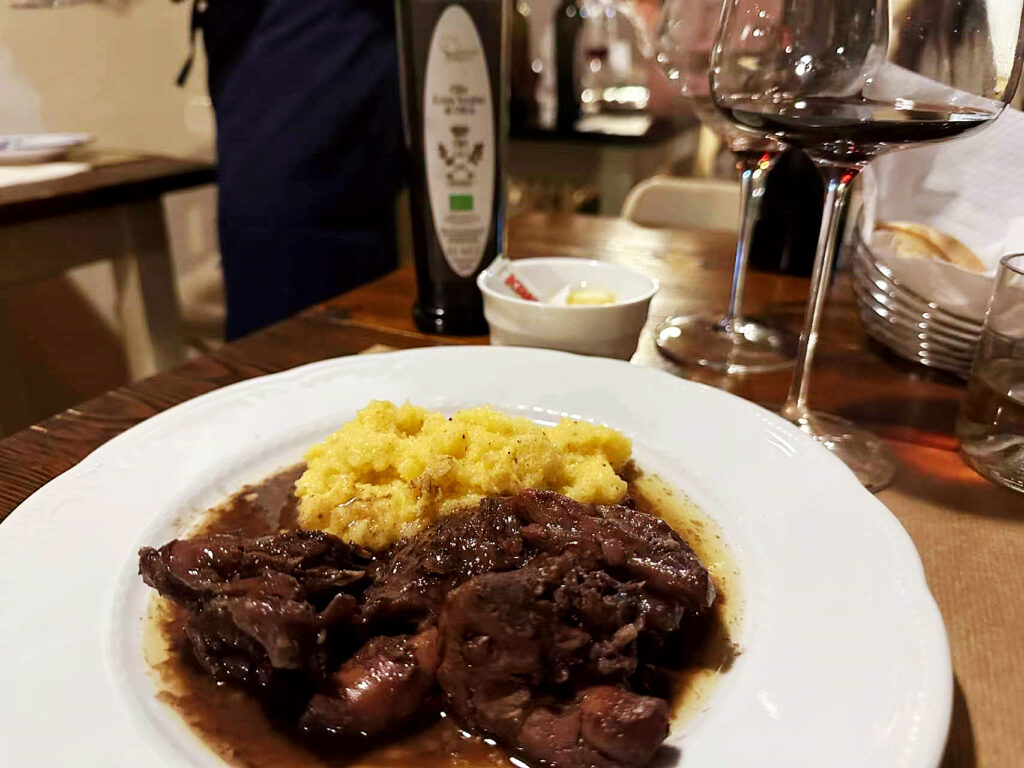
Last but not least, the two meat dishes were also nicely done, the rabbit (coniglio) more so than the stinco, but I’m probably just splitting hairs. For sure, the rabbit dish proved there is no shortage of cooking dexterity in the kitchen given that the animal’s lean delicate white meat is very quickly dried out by improper cooking technique and duration. But at the Taverna the meat was moist and tender and the dish was easy to like.
The wines
Val di Suga 1998 Brunello di Montalcino Vigna al Lago 94
Nonino Grappa Il Moscato di Nonino 92
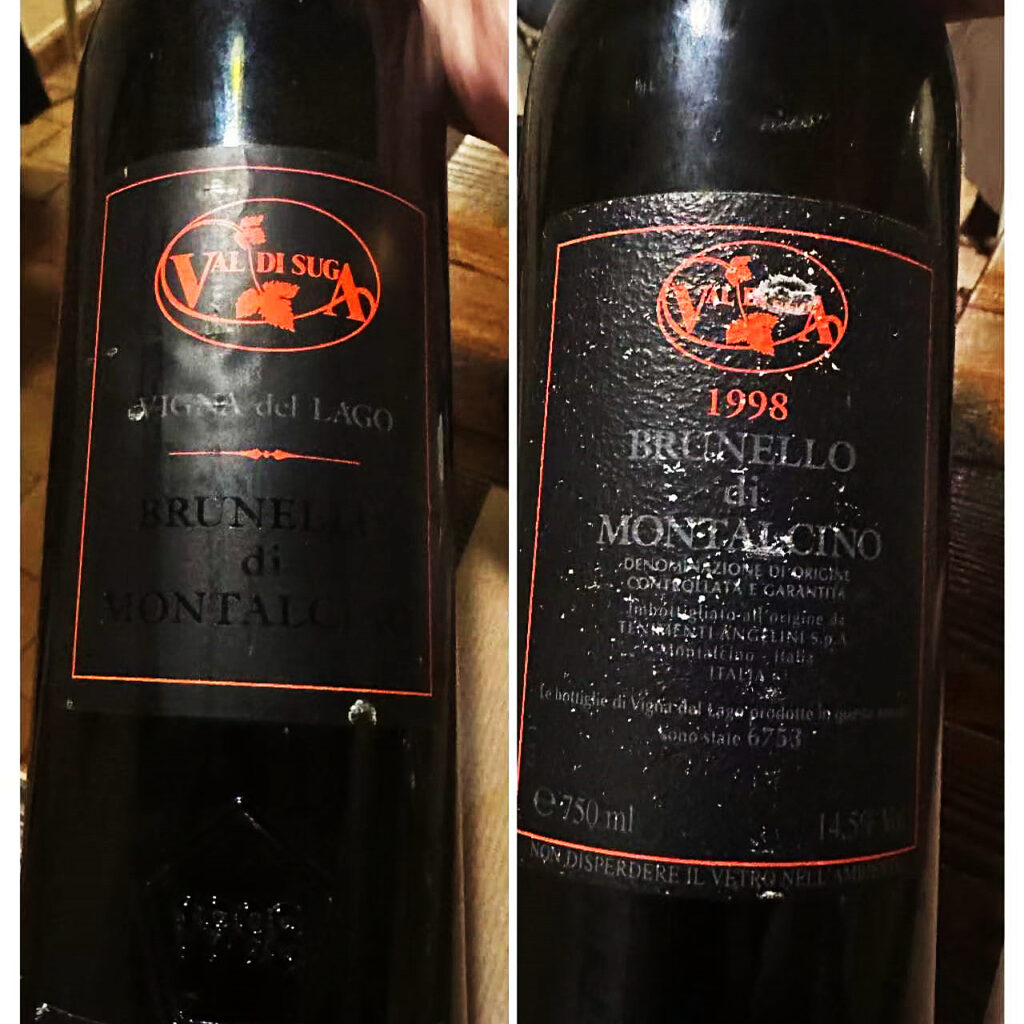
On the contrary, the wine certainly delivered its wow-moment. The Val di Suga 1998 Brunello di Montalcino Vigna al Lago is one of the all-time great wines of that less than stellar but also underrated vintage. It is also the last wine made from the original, magnificent vineyard, before it was uprooted due to low productivity and diseased vines. Here, the depth and richness that old vines deliver is brought out fully to the fore, with a seductively rich glass of Sangiovese that grabs your taste buds and just won’t let go. Good full red with a garnet rim, the aromas and flavours are of a surprisingly ripe nature, with fleshy red cherry, raspberry nectar, licorice, tar, spice-cake and a candied violet note adding interest. Mouthcoating but suave, with fleshy super-ripe nuances of red and dark fruit lingering nicely on the long multilayered, tannic finish. Though there is no shortage of tannins, in keeping with the 1998 vintage in Montalcino, there are gobs and oodles of such ripe fruit that the tannic framework is really only obvious on the long back end, and briefly at that. With our meat dishes, they not only weren’t much evident at all, but were actually a blessing as they helped cut right through the oiliness of the meat, fat and tomato reductions the two dishes came with. Honestly, I think I might be being a little stingy with my score of 94. We finished off the meal with alovely grappa from italy’s most famous producer, Nonino, made with an aromatic Moscato Bianco grape. The Nonino Grappa Il Moscato di Nonino was delicious, fiery-hot but well-balanced, and the aromatics of the grape carrying through on the long sultry finish. It’s a perfect way to end dinner.
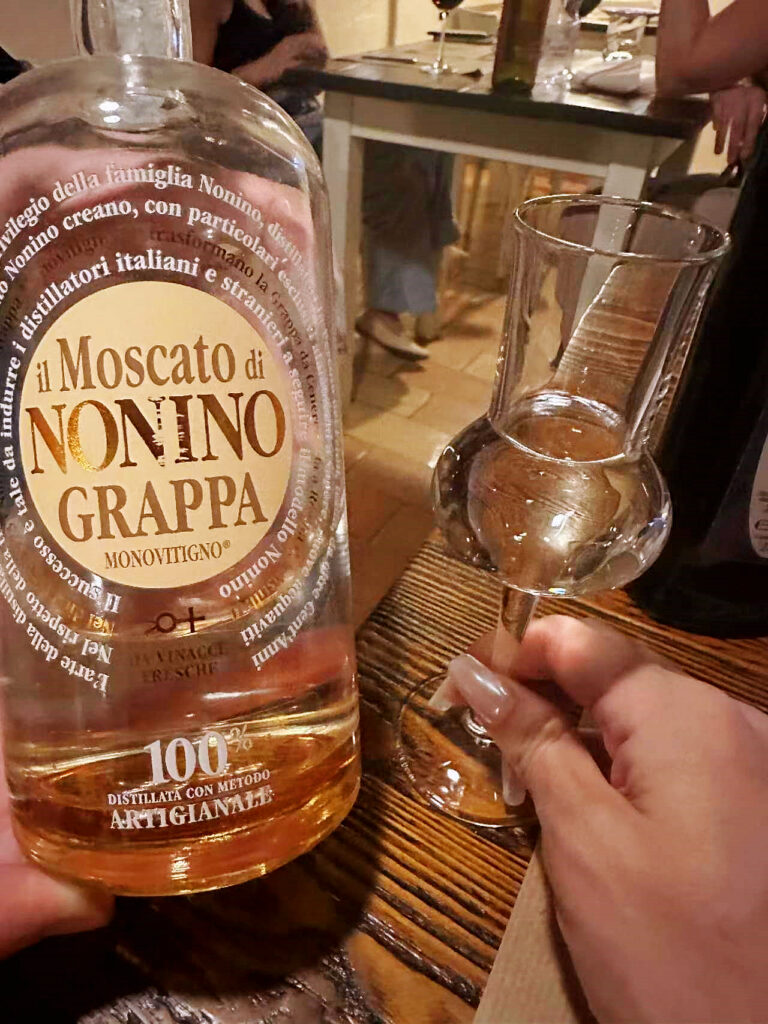
In summary, La Taverna del Grappolo Blu is the perfect place for old friends and couples to spend a quiet dinner at: there will be no gastronomic discoveries and no wow-moments, just solid, well-done Tuscan countryside cooking in a charming but simple and rustic environment that won’t disappoint. And given the state of affairs in many tourist traps out there, well, that’s good news right there.
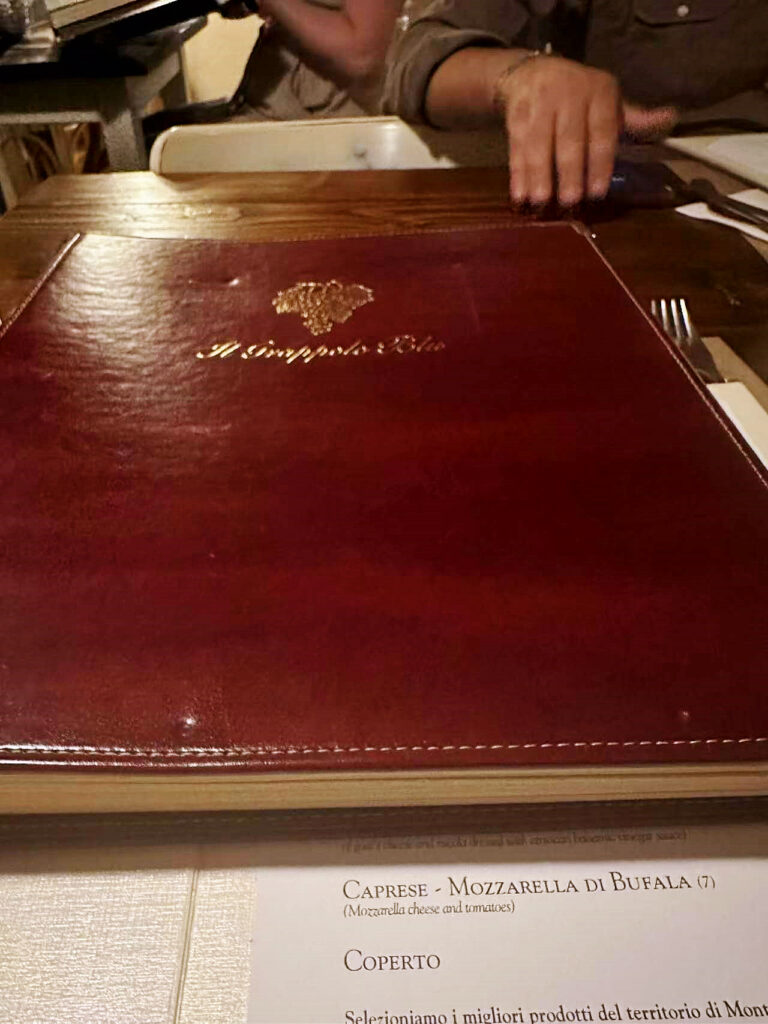

 English
English
